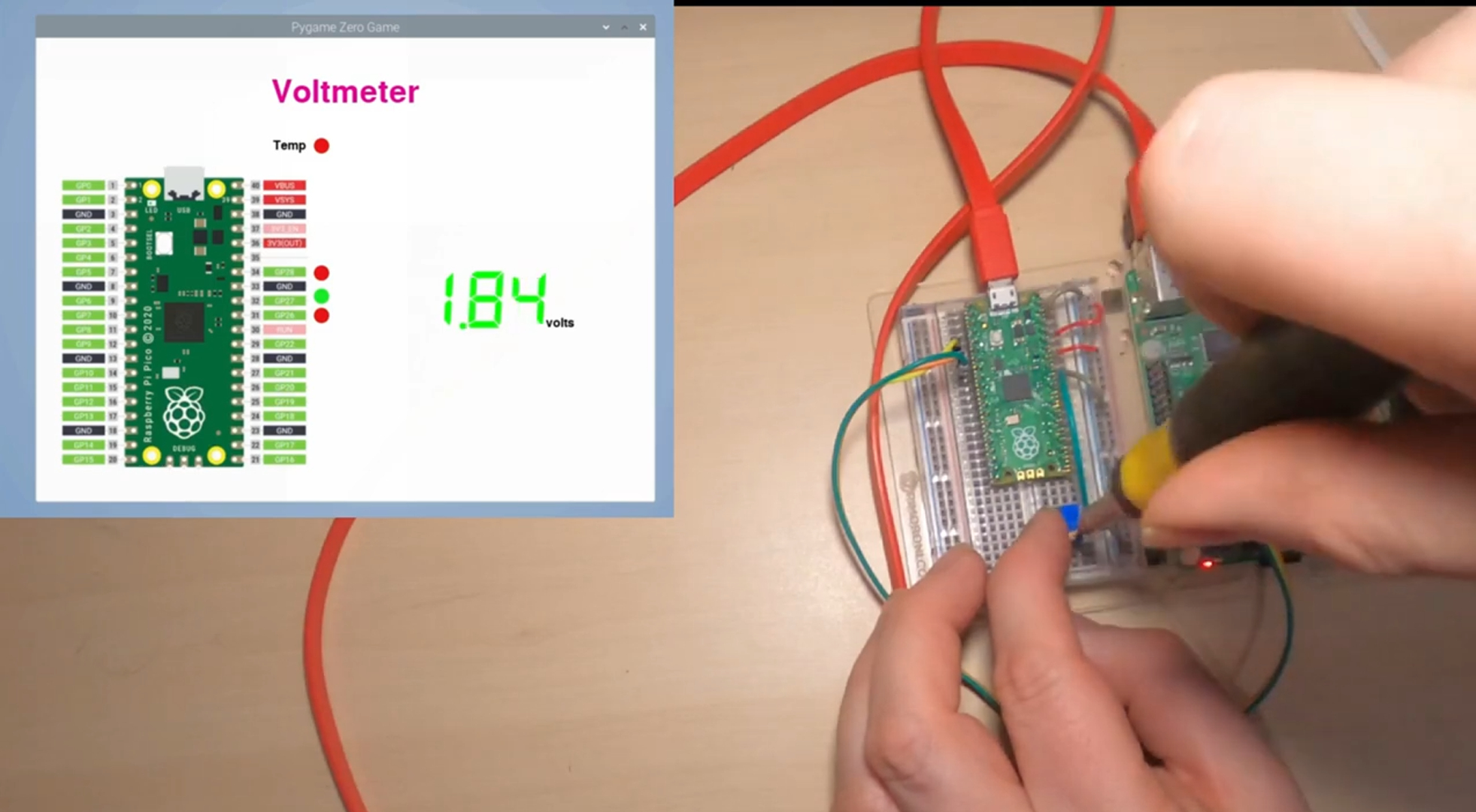Why purchase a specialized tool when you can create your own with a Raspberry Pi? That seems to be what maker Stewart Watkiss was thinking when creating this Raspberry Pi Pico Voltmeter project.
We’ve been excited to see such a massive selection of Raspberry Pi Pico projects since it first released and this one is an excellent example of how the Pico can be incorporated into more complicated structures using the Raspberry Pi.
Watkiss wanted to use SPI or I2C but ultimately settled on using the UART serial port and one of the Pico’s Analog-to-Digital pins to monitor voltage input. The voltage information is transferred to the Raspberry Pi via UART and from there it is output to a custom GUI written using Pygame Zero, a multimedia creation module for Python.
Watkiss programmed the voltmeter application using Python while the Pico relies on MicroPython but the two can communicate with one another quite easily. For anyone interested in recreating this Pico Voltmeter project, you can find all of the files you need on the Penguin Tutor website.
Check out our list of Best Raspberry Pi Projects for more cool creations from the Raspberry Pi community.
